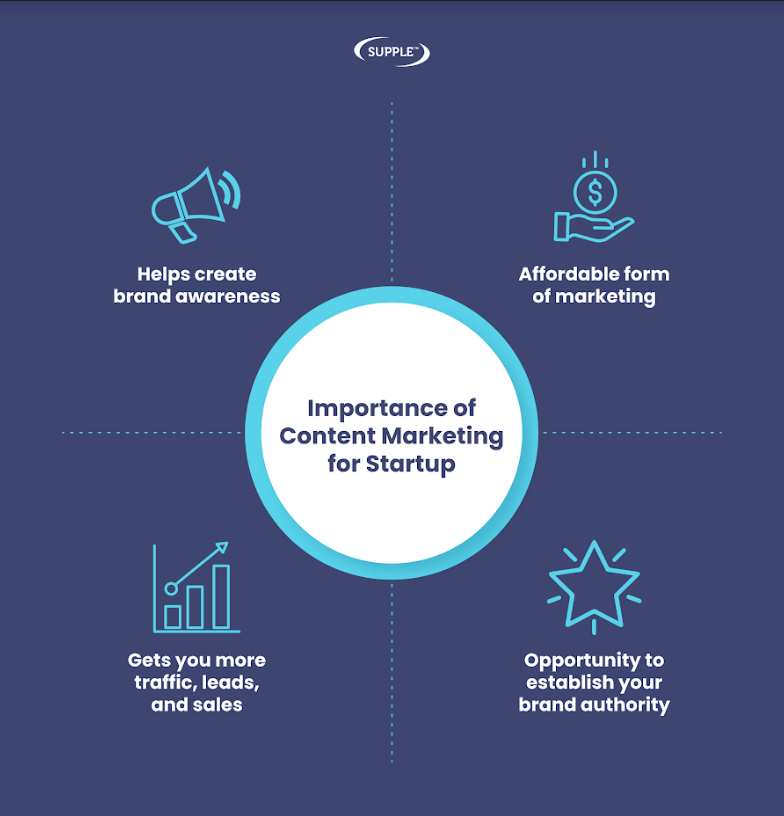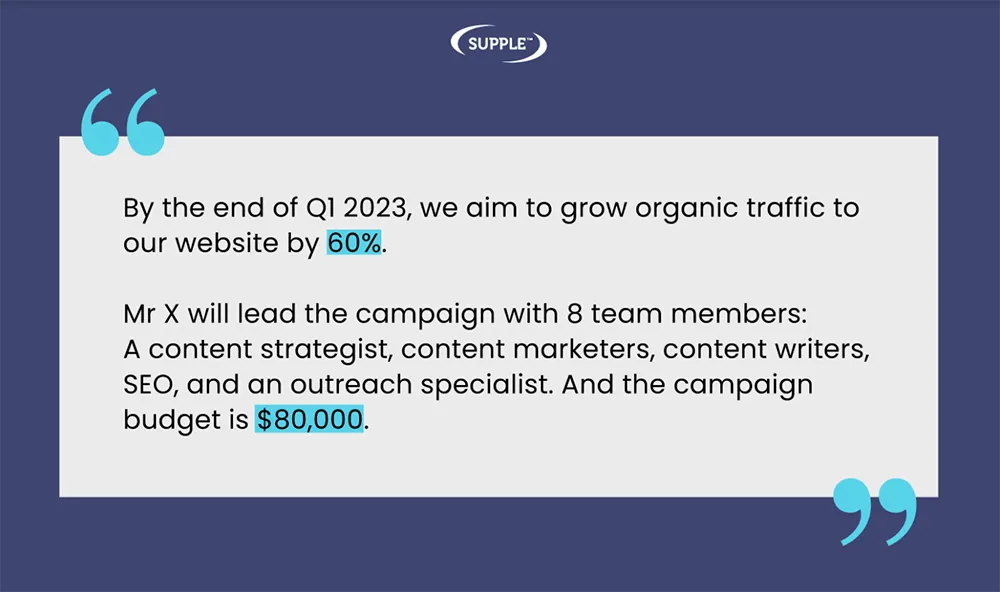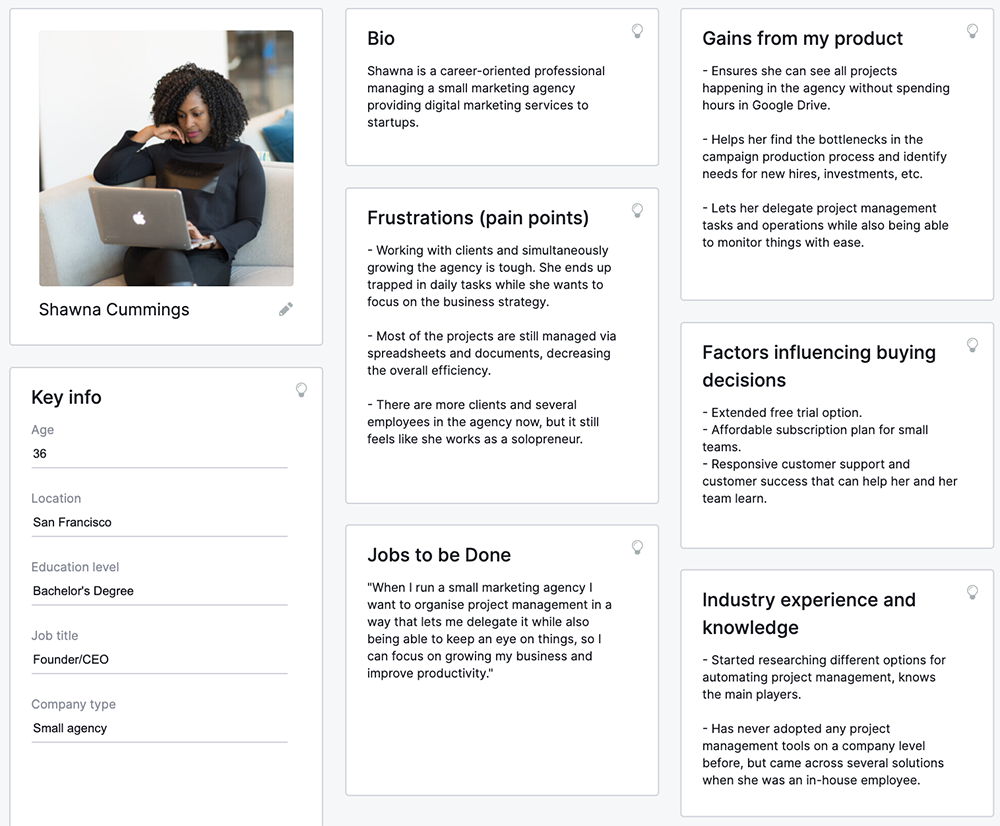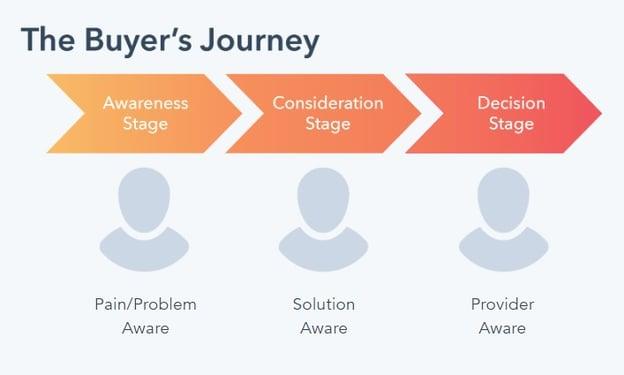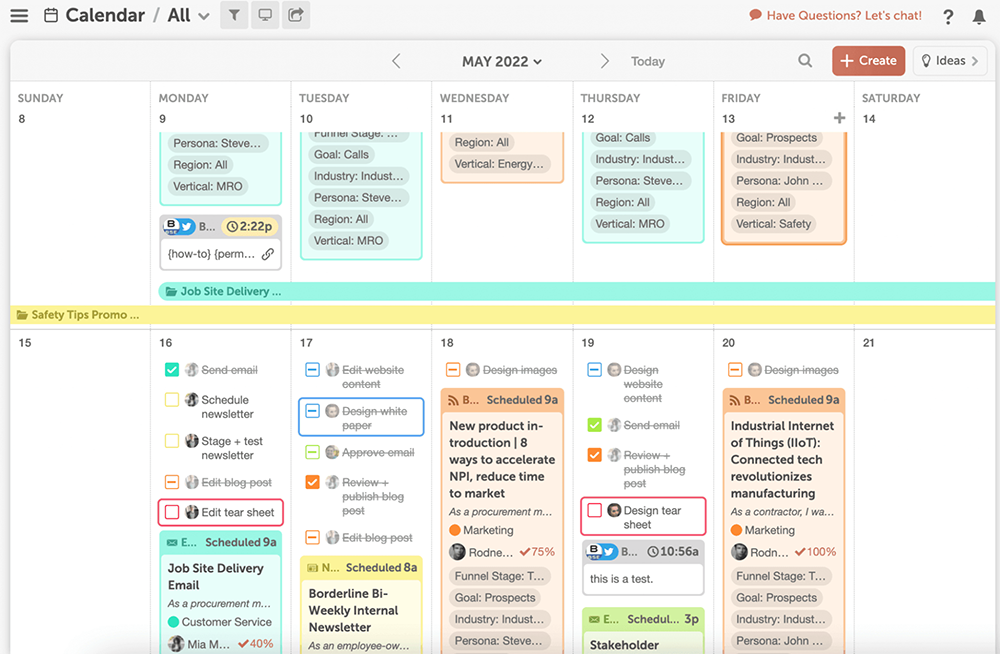Content Marketing for Australian Startups: A Brief Guide to Help You Scale
Wondering whether you should use content marketing for your startup?
We don’t blame you! Content marketing is indeed gaining immense popularity as a preferred marketing tactic among startups.
So while there are countless benefits, content marketing requires strategic planning, resources, and real work to get the most out of it.
In this guide, we’ll discuss what content marketing for startups looks like and how to create a rewarding content marketing strategy for startups.
Let’s get started.
Importance of Content Marketing for Startup
Startups have to hustle through a multitude of challenges in the initial months (even years) of business. From lack of credibility to tight marketing budgets and weak brand presence to absence of trust factor in the target market, the list goes on.
If done right, content marketing can solve many of these startup challenges regardless of the industry.
Here’s how:
- Helps create brand awareness: You can increase your startup’s brand presence online by creating quality content resources. All you have to do is research and pick the topics that your target audience cares about and help them solve their problems through your content. This way, your brand will be visible to more and more people.
- Affordable form of marketing: Startups—especially non-funded—can’t spare millions for their marketing costs. They have to make do with limited financial resources. That’s why content marketing is an ideal marketing method for startups since it costs 62% less than traditional marketing and generates three times more leads.
- Opportunity to establish your brand authority: When you genuinely help your audience solve their problems through your content, your brand becomes a go-to source for them. They start seeing you as an authority in your niche and eventually also trust your product offering.
- Gets you more traffic, leads, and sales: A survey reveals that 70% of customers prefer learning about a business through their articles rather than advertisements. With a resourceful blog on your website, you can drive huge numbers of visitors to your website over time. Also, businesses that have a blog tend to generate 67% more leads than companies that don’t have a blog.
Thus, you can generate more website traffic & leads, and convert them into paying customers.
Considering the above benefits, content marketing is becoming one of the most effective and preferred marketing methods for startups.
How to Create an Effective Content Marketing Strategy for Startups?
Now that you know why content marketing is crucial for your startup, it’s also important to understand what makes for an effective content marketing strategy for startups.
Here is the step-by-step process to create a robust content marketing strategy to scale your business.
1. Get the Buy-in from Management
It takes time to build an online presence and generate results through content marketing and SEO.
On the other hand, the management team might be looking for marketing channels like paid ads that can produce fast results. So they may or may not agree to grant you the time and funds needed for content marketing campaigns.
Note that, it’s difficult to succeed with content marketing if your management team doesn’t believe in it and supports you with adequate resources.
Thus, it’s crucial to get their buy-in for your startup content marketing plan.
Here’s what you can do:
- Share some case studies of businesses that succeeded with content marketing.
- Show data and statistics that prove how businesses are adopting SEO and content marketing as their primary marketing channels. For instance, 79% of B2B marketers reported having a documented content marketing strategy for their company.
- Create a detailed plan to display how you’ll define and measure the success of your campaigns.
- Don’t overpromise the results to get the go-ahead. It’s best to set realistic expectations.
This would help you get the approval for the budget and resources required for your content marketing campaigns.
2. Set Content Marketing Goals
Next, you need to decide the goals you want to accomplish through content marketing. Be it a startup or a well-established organisation, it’s a given that your marketing goals must be aligned with your overall business goals.
For startups, it’s even more important to keep a close tab on business goals since it decides the future growth trajectory. The goals that you set and achieve in the initial years of your business, help you attract investors and scale up.
The good old SMART framework is still relevant to define your business and content marketing goals:
- Specific (S): Have you set specific goals? It helps your team get clarity about what is to be achieved.
- Measurable (M): Are you able to quantify your goals?
- Attainable (A): Given the current resources and skill set of your team, can you achieve the set goals within the stipulated time?
- Relevant (R): Are the set goals significant enough to help you reach your business/bottomline targets?
- Timebound (T): What is the timeline to attain the desired goal?
Here’s an example of a SMART content marketing goal:
By the end of Q1 2023, we aim to grow organic traffic to our website by 60%.
Mr X will lead the campaign with 8 team members: a content strategist, content marketers, content writers, SEO, and an outreach specialist. And the campaign budget is $80,000
3. Research your Audience and Define Buyer Persona
Next, you need to research your target audience and create a buyer persona or Ideal Customer Profile (ICP) for your organisation.
A buyer persona is a fictional representation of a key segment of your target audience. It means the majority of your customer profiles would resemble this imaginary character. So you need to get as much information about your audience as possible.
Take a look at the below sample persona.
Image Source: Semrush
With a clearly defined buyer persona, your marketing message would reach the right audience and get qualified traffic to your website.
Qualified traffic means relevant visitors that may become your customers in future.
Let’s say, you’re running a Law Firm[1] [2] that specialises in property conveyancing. Now, if you’re looking forward to getting inbound leads through your website, you’d want inquiries from customers with legal challenges like real estate compliance, property dispute, etc. and not from a separated couple—with all due respect and compassion—fighting for child’s custody.
Without a clearly defined buyer persona, you’re shooting in the dark and you may get traffic and leads that are not relevant to your business.
4. Identify Topics to Target
Before you start creating content, you need to understand what your audience is searching for online. Your audience’s search queries would provide you with the foundation for topic ideas. This process of finding content ideas from searchers’ queries is called keyword research.
Here are the two important aspects of thorough keyword research:
- Analysing user intent: Search intent is the underlying reason behind a user’s search query. Search intent can typically be categorised into broad categories such as:
- Informational intent—searchers are looking for information so their search queries sound like “what”, “where”, “how”, “why”, etc.
- Navigational intent—searchers usually know what website they want to visit so they search with brand name e.g. “facebook”, “linkedin”, etc.
- Commercial investigation intent—searcher is comparing different options or reviews. For example “shopify vs woocommerce”, “tesla reviews”, etc.
- Transactional intent—searchers know what they want to buy so their search queries may look like “buy iphone”, “spotify coupon”, etc.
- Selecting right keywords: For this part of keyword research you’d require professional marketing and SEO tools like Ahrefs or Semrush. You need to sort your audience’s search queries (keywords they use while searching in Google) keeping the below factors in mind:
- Search volume: The monthly search demand for a specific keyword
- Keyword difficulty: The level of difficulty to rank for a keyword
- Business potential: The relevance of a keyword according to your product/service offering
After shortlisting the keywords based on the above parameters, you can compile them and create a list of topic ideas.
5. Determine the Content Formats
Once you have the list of content ideas for, you can decide on the content formats that would be an ideal fit for various stages in your buyers’ journey.
Image Source: HubSpot
Awareness Stage/Top of the Funnel (TOFU)
In this stage, you’d want to target a wider set of audience to create awareness about the problem that your business solves. This would attract the visitors that may have a need for your solution.
Let’s look at some of the most popular TOFU content formats to answer your audience’s queries in the awareness stage:
- Blog posts and guides
- Short videos
- Infographics
- Podcasts
- Free tools
- Social media posts, etc.
Consideration Stage/Middle of the Funnel (MOFU)
In the Consideration Stage, your audience would have been adequately educated about their problems and would be well aware of the available solutions. If they’re navigating through your MOFU content pages it may also indicate they’re interested in your solution.
Here are some of the most effective MOFU content formats:
- In-depth blogs
- In-depth guides
- In-depth videos
- Whitepapers
- Free templates
- Email nurture campaigns
- Newsletters
- Webinars
- Free courses, etc.
Decision Stage/Bottom of the Funnel (BOFU)
BOFU content addresses a narrow audience—people that are ready to make the buying decision. Since it directly impacts your site’s conversion rate and so your revenues, it’s a crucial set of content assets for your marketing campaigns.
These are the most used BOFU content formats:
- Case studies
- Product comparisons
- Detailed product videos
- Product alternative pages
- Detailed specifications/use cases
- Customer reviews & testimonials
- Competitor comparison pages
- User-generated content, etc.
6. Create a Content Calendar
One of the biggest mistakes you can make with your content marketing campaigns is not having a strategic publishing schedule. You can easily overcome this challenge by creating a content calendar for your startup.
A content calendar is a document that helps you plan, create, and publish content on different platforms such as website blog, email marketing, and social media. It includes details like upcoming posts, status updates, updating/repurposing existing content, etc.
It looks something like this:
Image Source: CoSchedule
If you’re hands-on with spreadsheets or Google Sheets, you can easily create your own content calendar. Alternatively, you can also find many free content calendar templates on Google to take inspiration from.
7. Help your Audience with Valuable Content
Most users approach search engines to get a solution to their problems/queries. Hence, your intention to create content should primarily focus on helping them solve their problems and not merely ranking on the first page of Google search results.
So the best place to start while creating content is brainstorming questions like:
- What goals does my audience want to achieve?
- What are the possible obstacles that stop them from achieving these goals?
- What are the most common pain points of my audience?
- What are the best solutions to relieve these pain points? etc.
Let’s say, you provide HVAC services in Perth and you want to leverage content marketing to get more traffic and leads to your website. Now, you’re targeting the keyword “best HVAC services in perth”.
To help your audience you can create a listicle post that features the top HVAC services in Perth. Something like: “Top 10 HVAC Services in Perth in 2022”.
Sure, you’d place your service at the top but you’d also give your detailed (and genuine) analysis for other competing services. This would not only solve the searcher’s query but also bring visitors and leads to your website as long as it’s not a mere self-promotional blog.
8. Promote your Content
Let’s face it! Your content won’t get found and shared on its own. That’s why you need to promote and distribute content strategically.
Let’s understand some key tactics of content promotion:
- Sharing with the existing audience: You can start with sharing the newly published content with your existing audience on email lists and social media. This would help you gain initial traction for your new content and also get some social shares.
- Sharing within your niche communities: If you’re a part of online communities such as Facebook groups , slack or Reddit groups, share it with them (if the community guidelines allow). Since the members of these groups belong to your niche, you also stand a chance to get links from their site if they find your content super valuable.
- Run paid ads: You can also run pay-per-click advertising for your content and webpages provided your startup content marketing budget permits it. This can help you get targeted traffic quickly until your content starts ranking and driving organic visits.
Scale Up with Content Marketing
We have tried to cover the key aspects of content marketing for startups in this guide. This should help you get started with a basic plan for your startup content marketing. All you have to do is follow the above steps, create your content marketing strategy, and document it.
Remember, there’s no one-size-fits-all when it comes to getting results through content marketing. You have to invest time and resources over a sustained period of time to experience substantial results from it.
Meanwhile, if you want to get our expert marketers to help you with your content marketing strategy, feel free to reach out. We’ll help you scale your startup with content marketing.
DIGITAL MARKETING FOR ALL OF AUSTRALIA
- SEO AgencyMelbourne
- SEO AgencySydney
- SEO AgencyBrisbane
- SEO AgencyAdelaide
- SEO AgencyPerth
- SEO AgencyCanberra
- SEO AgencyHobart
- SEO AgencyDarwin
- SEO AgencyGold Coast
- We work with all businesses across Australia
